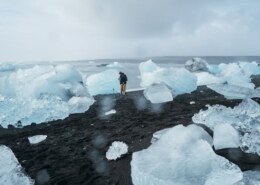How is climate change affected over the years
1. How might climate change and ocean acidification affect shark populations and their prey? Climate change and ocean acidification can have several impacts on shark populations and their prey: Prey species: Changes in ocean temperature and chemistry can alter the distribution, abundance, and behaviRead more
1. How might climate change and ocean acidification affect shark populations and their prey?
Climate change and ocean acidification can have several impacts on shark populations and their prey:
- Prey species: Changes in ocean temperature and chemistry can alter the distribution, abundance, and behavior of shark prey species, such as fish, squid, and crustaceans. For example:
- Warmer waters can lead to changes in the distribution of fish species, making it difficult for sharks to find their preferred prey.
- Ocean acidification can affect the growth rates and survival of some fish species, potentially reducing the availability of prey for sharks.
- Shark populations: Climate change can directly impact shark populations through:
- Changes in water temperature and chemistry: Some shark species may be sensitive to changes in ocean conditions, which can affect their physiological processes, such as metabolism, growth, and reproduction.
- Shifts in habitat: As water temperatures change, sharks may need to move to different areas to find suitable habitats, which can lead to changes in their distribution and abundance.
- Increased mortality: Climate-related events like coral bleaching, ocean warming, or acidification can increase mortality rates among sharks, particularly in vulnerable species.
2. What are the potential impacts of rising sea temperatures on the distribution of shark species?
Rising sea temperatures can lead to changes in the distribution of shark species:
- Range shifts: As water temperatures warm, some shark species may move poleward (toward the poles) or upward (to deeper waters) to find cooler temperatures.
- Changes in migration patterns: Climate-driven changes in ocean currents and temperature gradients may alter the migration patterns of sharks, potentially leading to changes in their distribution and abundance.
- Local extirpations: As temperatures increase, some shark species may become locally extinct in areas that were previously suitable for them, leading to range contractions.
- Invasive species: Changes in temperature and other environmental conditions can facilitate the spread of invasive shark species into new areas.
Some specific examples of how climate change is affecting shark distributions include:
- Great white sharks (Carcharodon carcharias) are shifting their range northward in response to warming waters.
- Tiger sharks (Galeocerdo cuvier) are moving poleward into Australian waters as a result of climate-driven changes in their prey distribution.
- Hammerhead sharks (Sphyrna spp.) are experiencing local extirpations in some regions due to warming waters.



Climate change has been significantly affecting the planet over the years in the following ways: Rising Temperatures: Global average temperatures have been steadily increasing since the late 19th century, with the last decade (2011-2020) being the warmest on record. The rate of warming has acceleratRead more
Climate change has been significantly affecting the planet over the years in the following ways:
- Rising Temperatures:
- Global average temperatures have been steadily increasing since the late 19th century, with the last decade (2011-2020) being the warmest on record.
- The rate of warming has accelerated, with the 2010s being the hottest decade ever recorded.
- Warming is more pronounced in certain regions, such as the Arctic, which is warming more than twice as fast as the global average.
- Melting Ice and Sea Level Rise:
- Arctic sea ice extent has declined rapidly, with the Arctic region experiencing significant ice loss.
- Glaciers around the world have been retreating and losing mass at an accelerated pace, particularly in mountain regions.
- The Greenland and Antarctic ice sheets have been experiencing significant melt and mass loss, contributing to the rise in global average sea levels.
- Global average sea levels have risen by about 8-9 inches (21-24 cm) since 1900, with the rate of rise accelerating in recent decades.
- Extreme Weather Events:
- The frequency, intensity, and duration of extreme weather events, such as heatwaves, droughts, wildfires, floods, and hurricanes, have increased significantly in many regions.
- These extreme events have caused significant damage, disruption, and loss of life in affected communities.
- Shifts in Precipitation Patterns:
- Climate change is altering precipitation patterns, leading to changes in the frequency, intensity, and distribution of rainfall and snowfall around the world.
- Some regions are experiencing more frequent and severe droughts, while others are seeing an increase in heavy precipitation events and flooding.
- Ecosystem and Biodiversity Impacts:
- Climate change is causing significant disruptions to natural ecosystems, leading to the loss of biodiversity, habitat degradation, and the displacement or extinction of many species.
- Coral reefs, tropical forests, Arctic tundra, and other sensitive ecosystems are particularly vulnerable to the effects of climate change.
- Socioeconomic Consequences:
- The impacts of climate change are having far-reaching socioeconomic consequences, including threats to food and water security, human health, infrastructure, and economic stability.
- These effects disproportionately impact vulnerable communities and developing countries.
See less